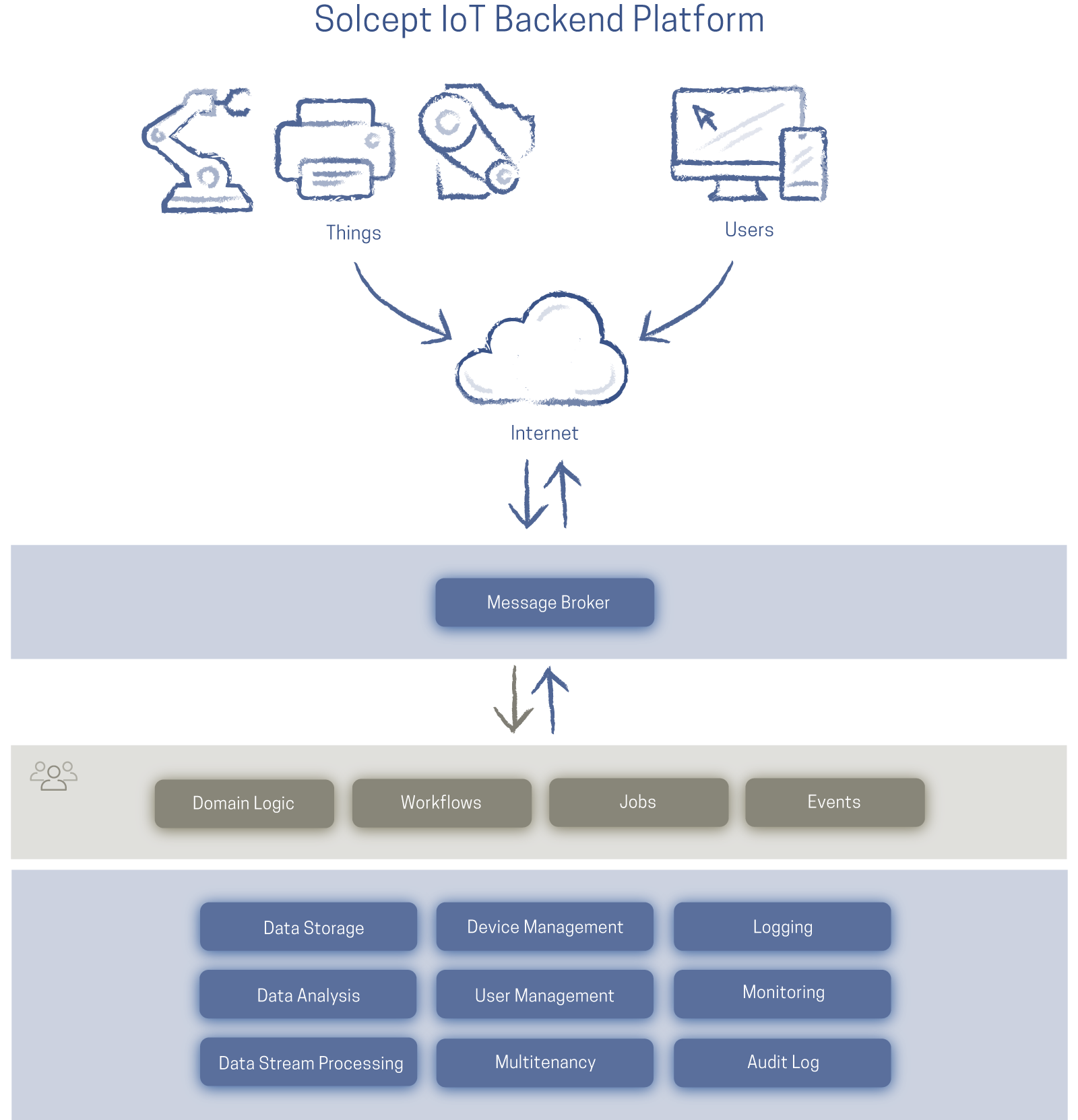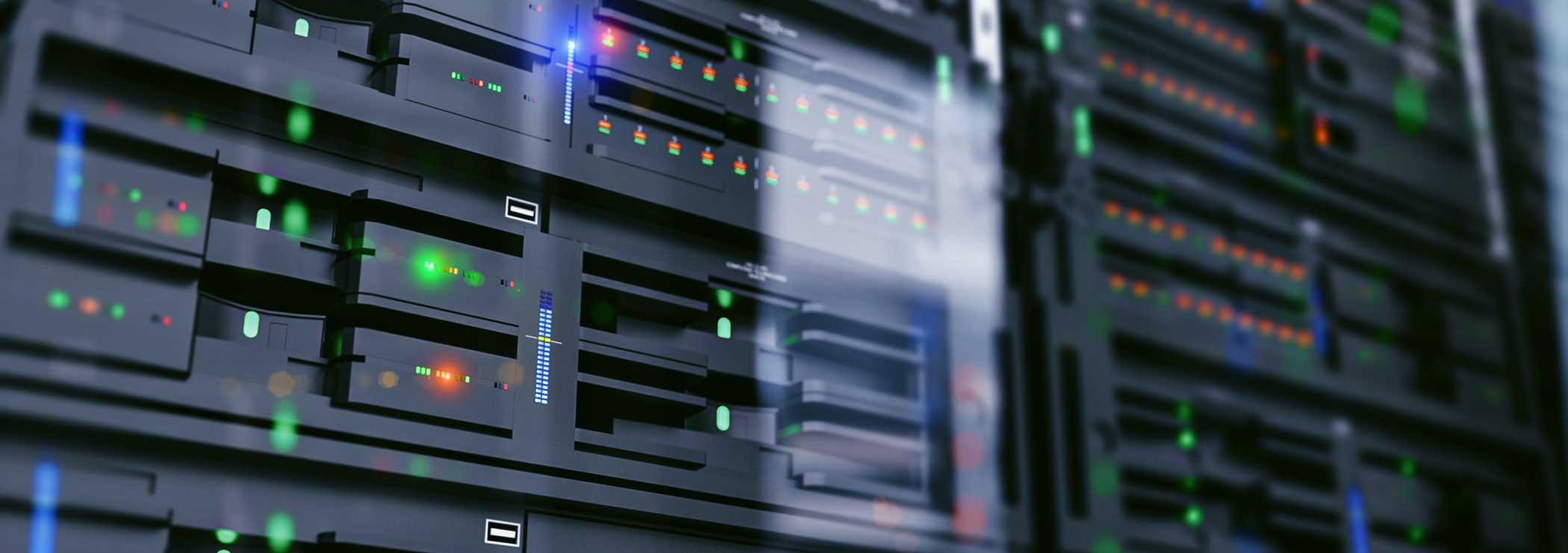
Functionality of the Standard Design
The platform offers these options (see also the drawing above: blue part):
- Communication with user
- Web API (synchronous)
- Message based (asynchronous)
- Push events (real-time)
- Application framework
- infrastructure framework for modular and maintainable applications
- Functions
- device and user management
- workflows
- data analysis, data representation
- event processing, jobs
- logging and monitoring
- security monitoring (audit logging)
- multitenancy
The non-functional requirements that the design fulfills are also important. These are often the larger limitation than the functional aspects:
- Data security
- encrypted communication
- device and user authentication
- role-based authorization
- data security through encryption
- identification and software update of IoT devices
- Industrial quality
- developed according to Solcept processes (CMMI for Development (Maturity Level 3), ISO 9001)
Your Application
The specific application (developed in C#) can include, but is not limited to:
- Functions
- customer/ service portal
- digital business processes
- monitoring and alerting
- Big Data
- any other function
- Maintenance of IoT devices
- configuration
- firmware update
- monitoring
- User interface
- Web/ mobile user interface for operating the backend
Technology Base
This Standard Design is based on the following technologies:
- Operating system
- Linux, Windows
- Solution Stack
- C#, .NET, ASP.NET, Blazor Server
- self-hosted (on-premise, IaaS), Azure Cloud
- containers (Docker, Kubernetes)
- open Source Components
- Azure Cloud Services
- Data storage and analysis
- PostgreSQL (SQL)
- Apache Cassandra (NoSQL)
- Apache Kafka (stream processing)
- Communications service provider
- Swisscom
- Thingstream
- Interfaces
- synchronous (HTTPS
- asynchronous (MQTT, AMQP)
- real-time (SignalR)
- Security
- TLS, DTLS, X.509
- AES, RSA, ECC
- SHA
